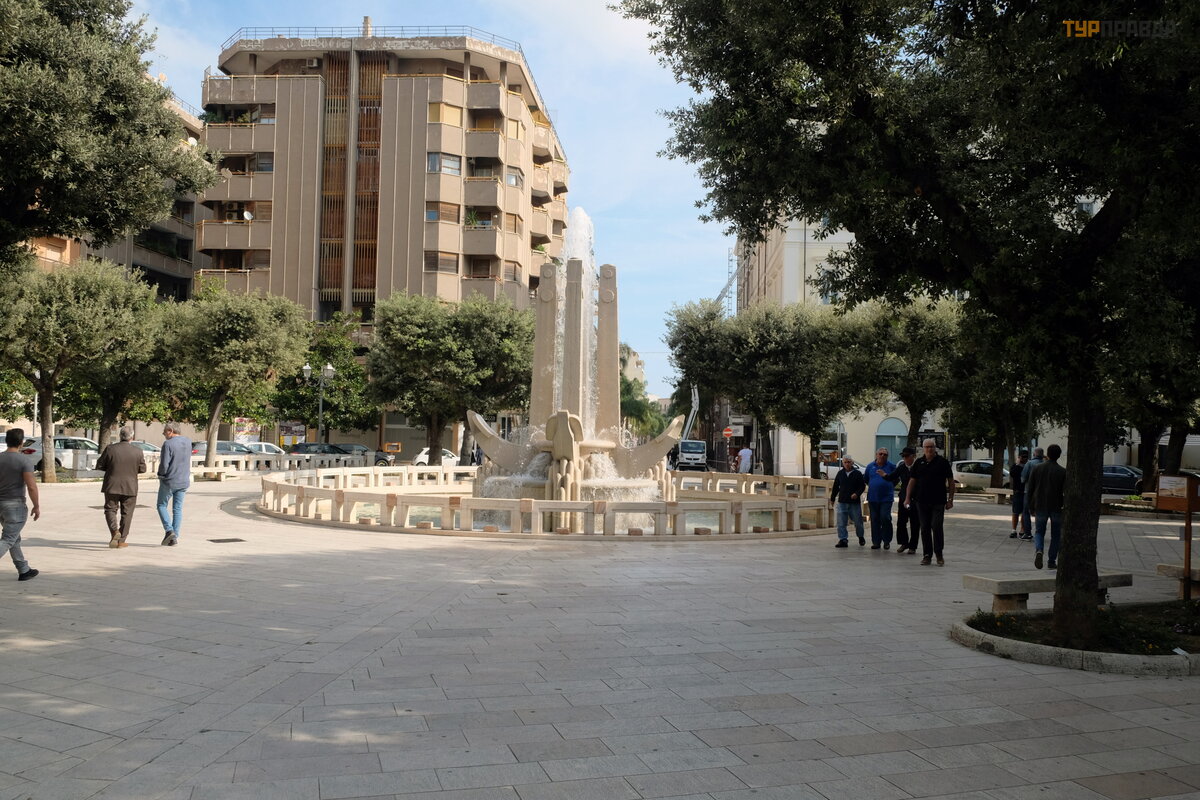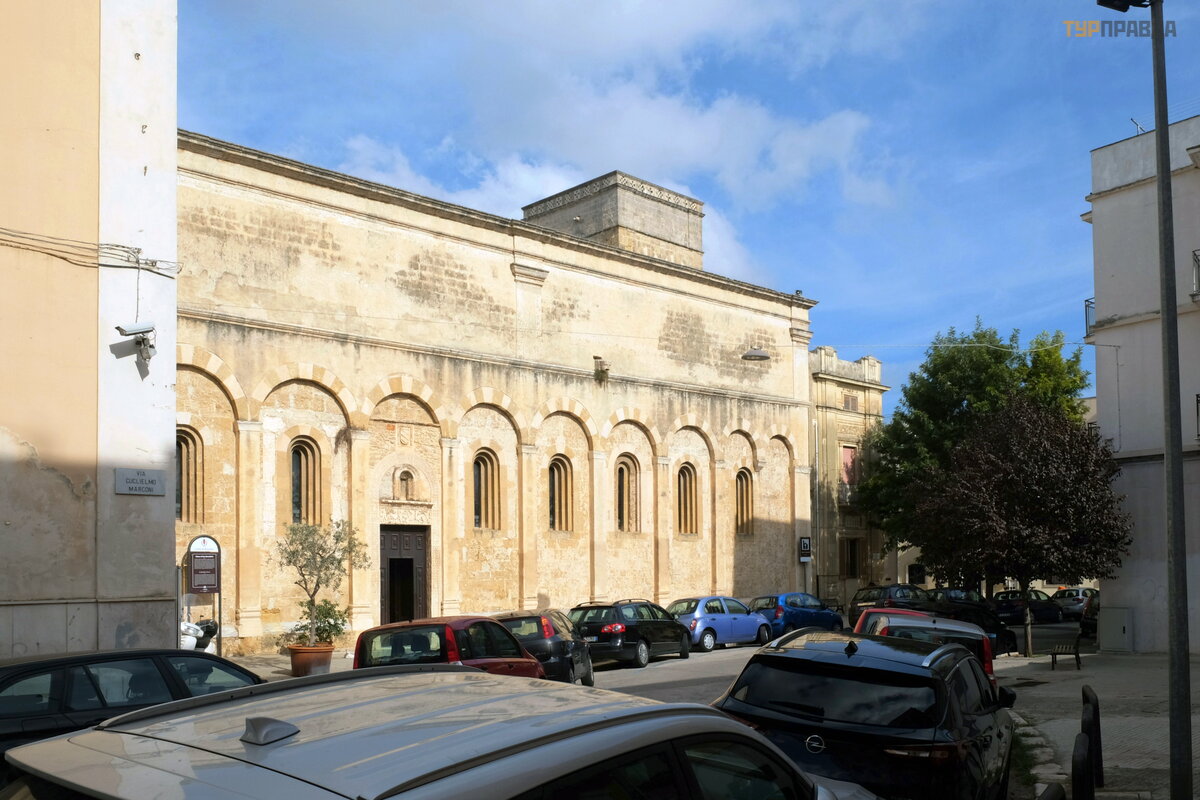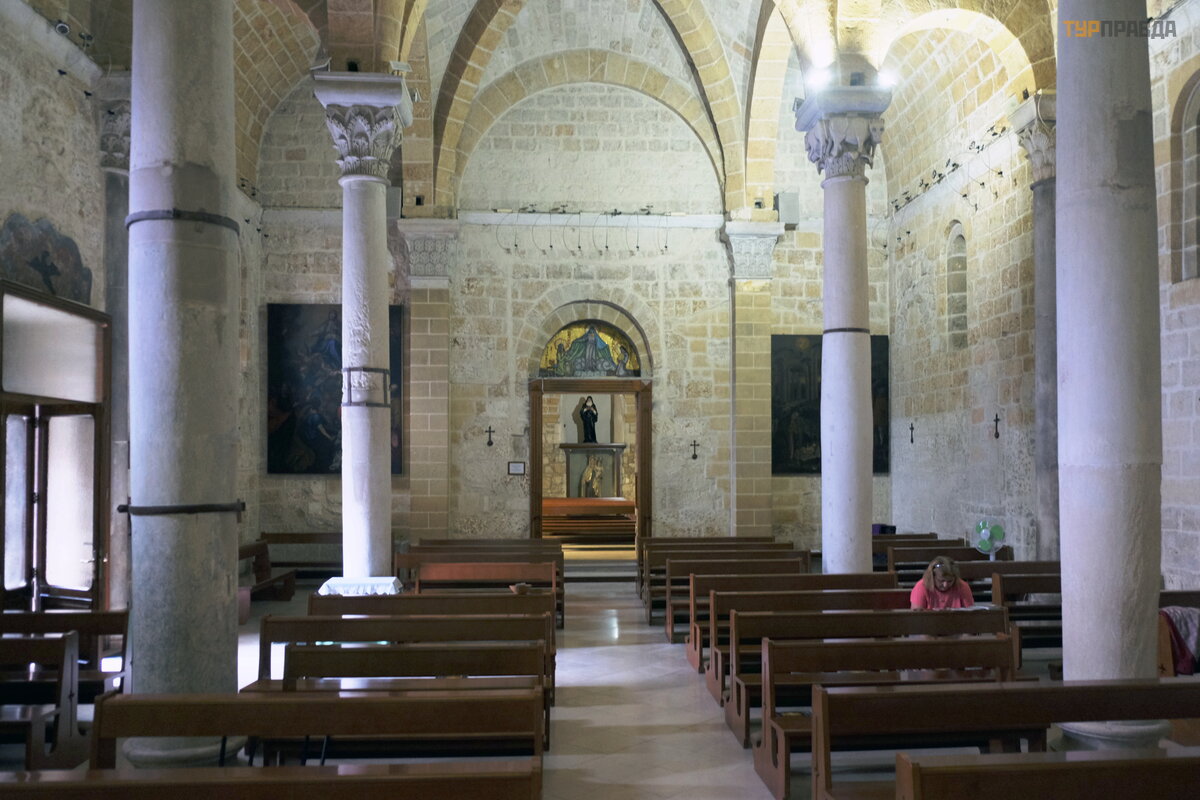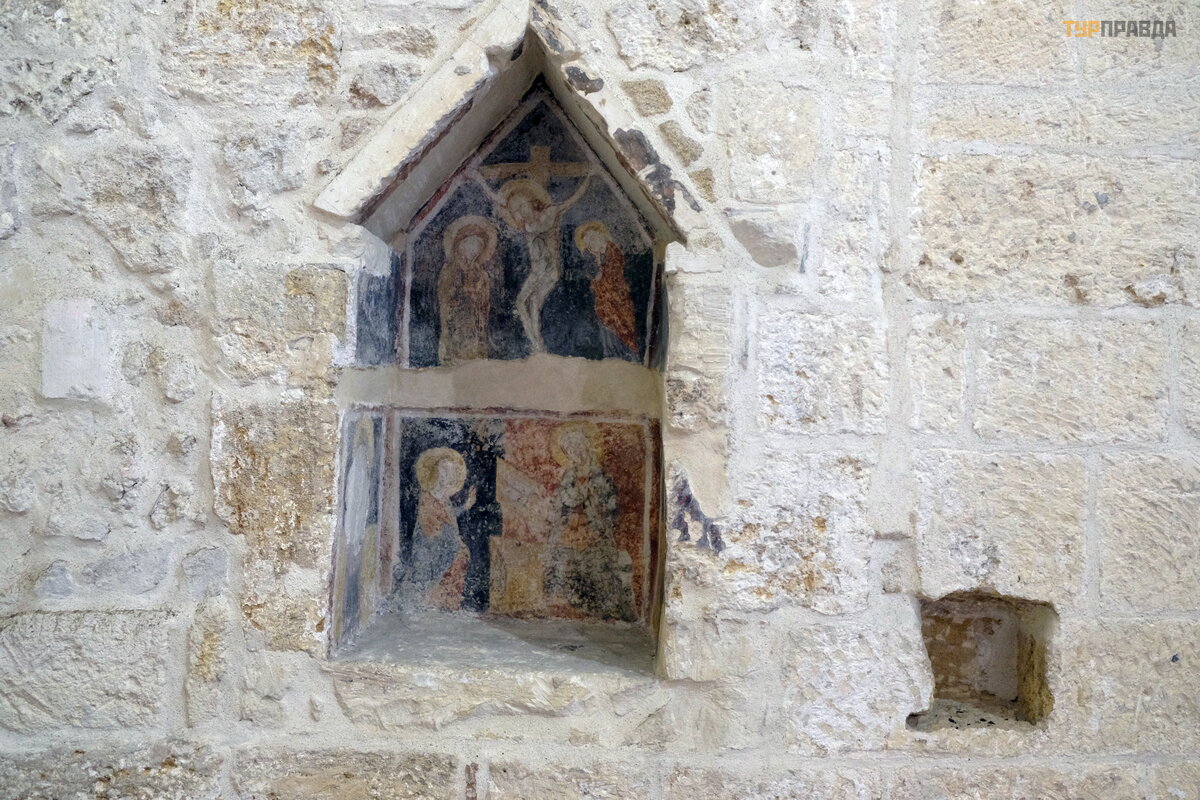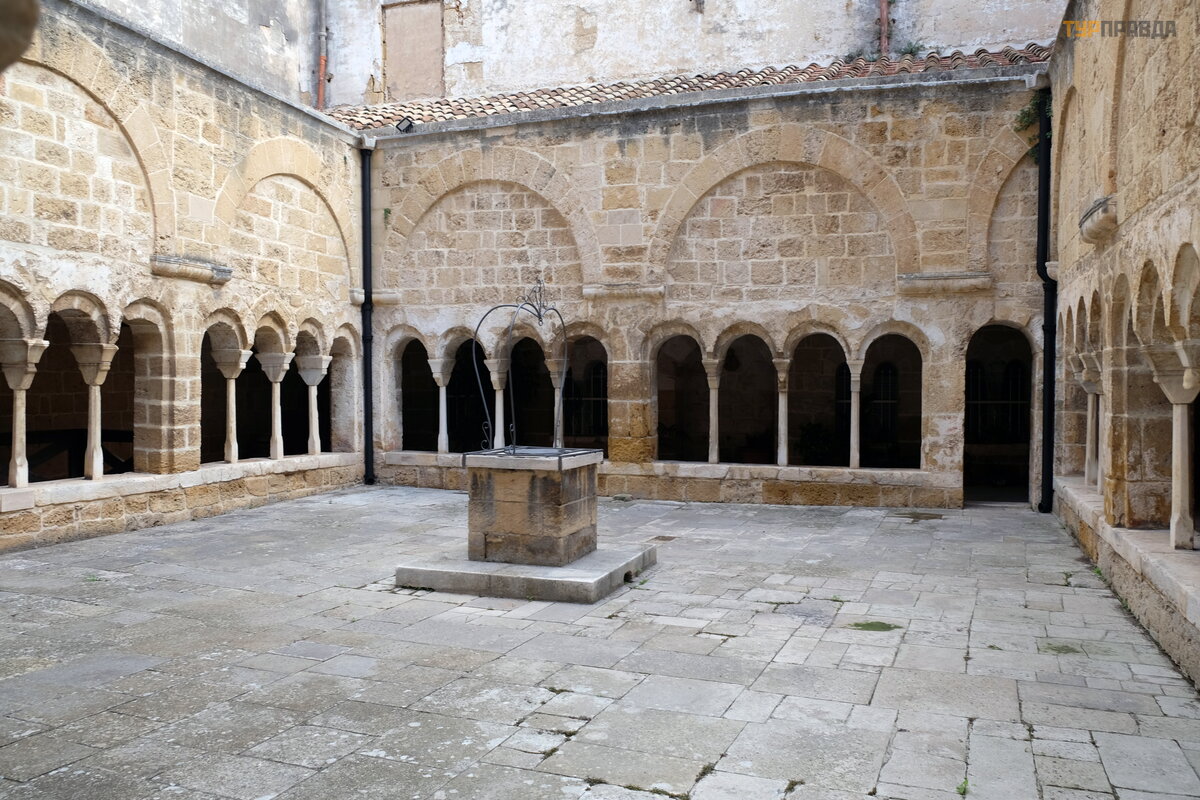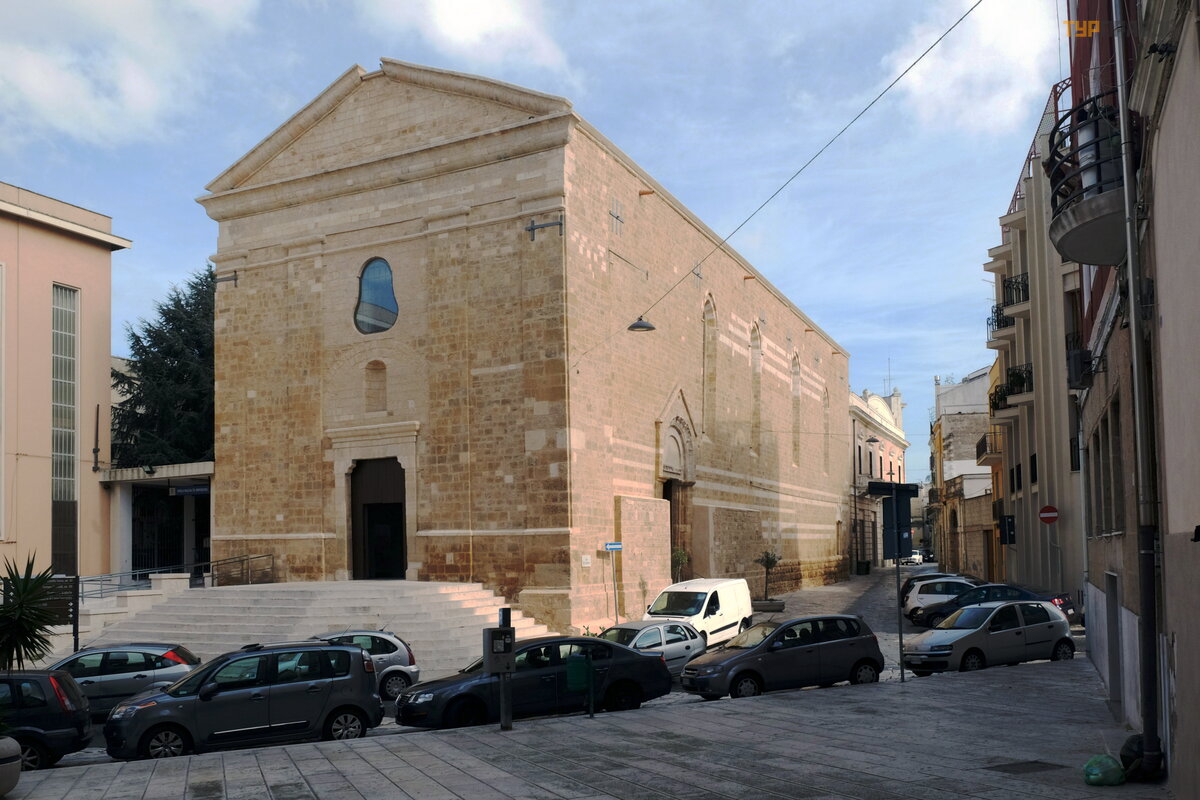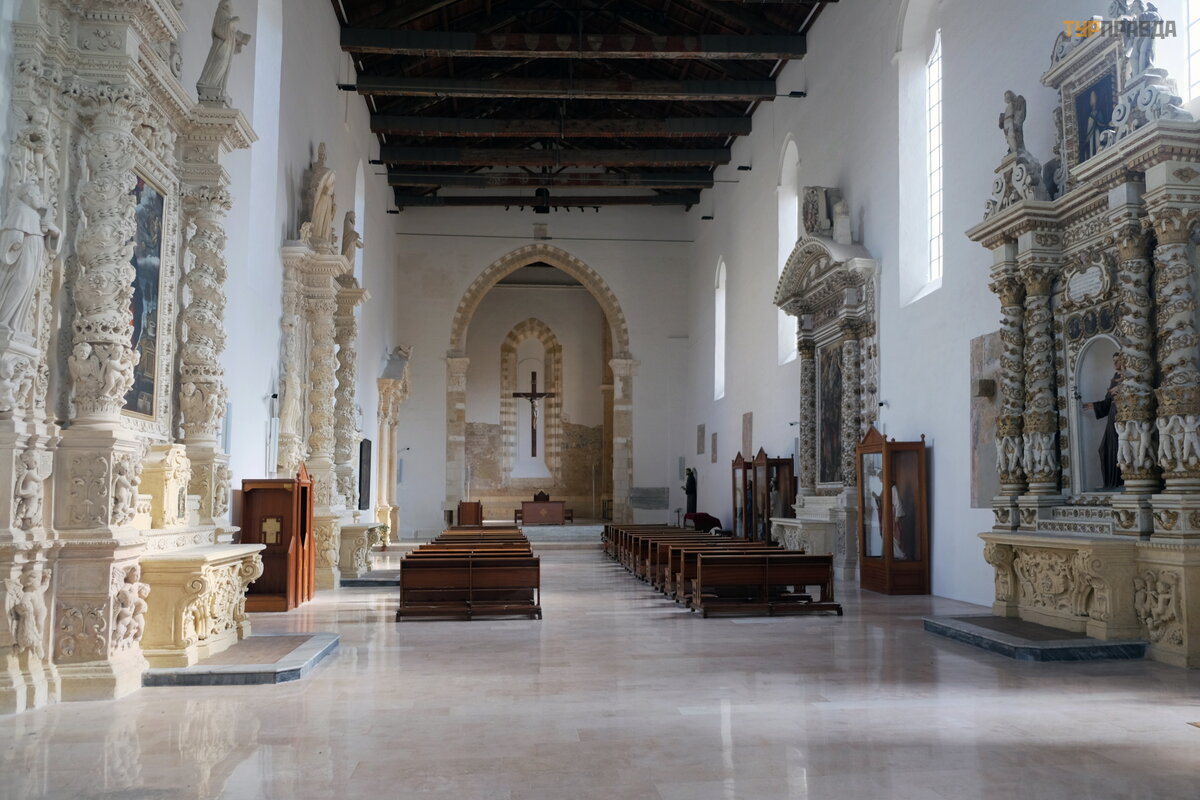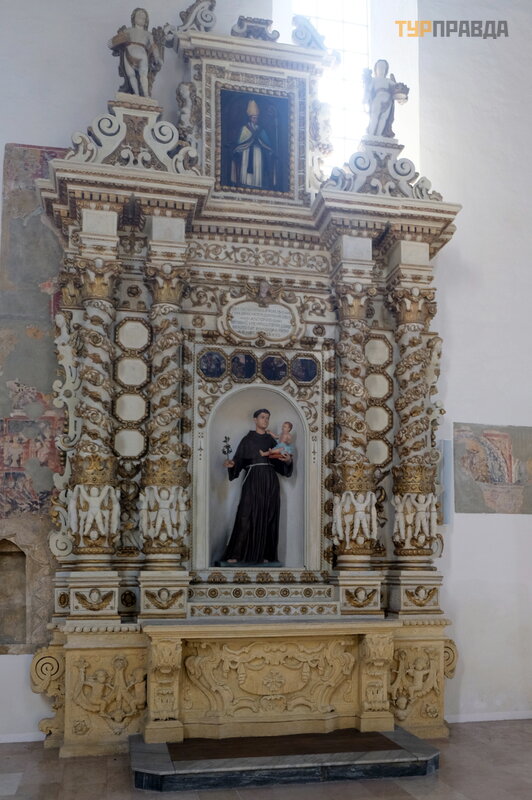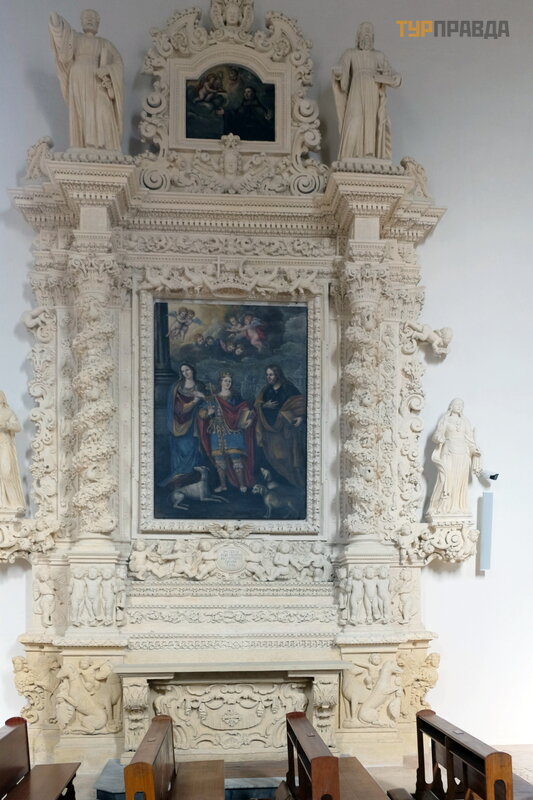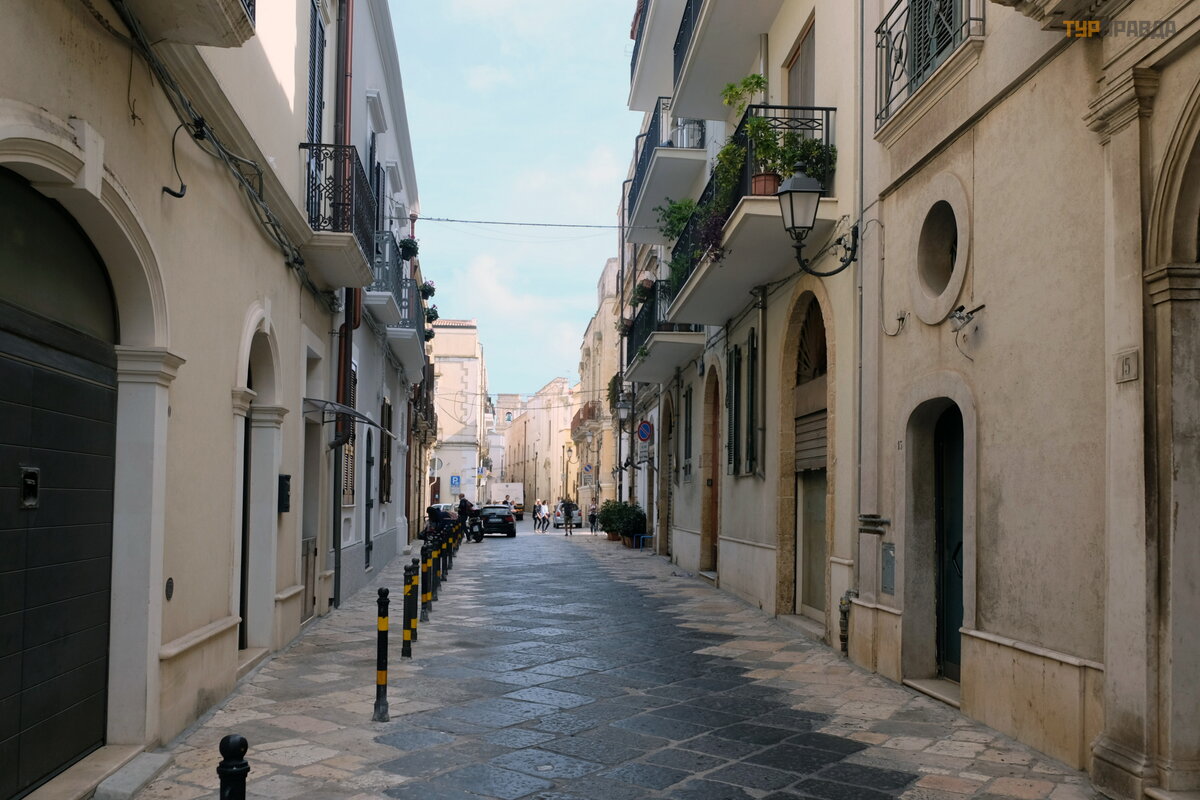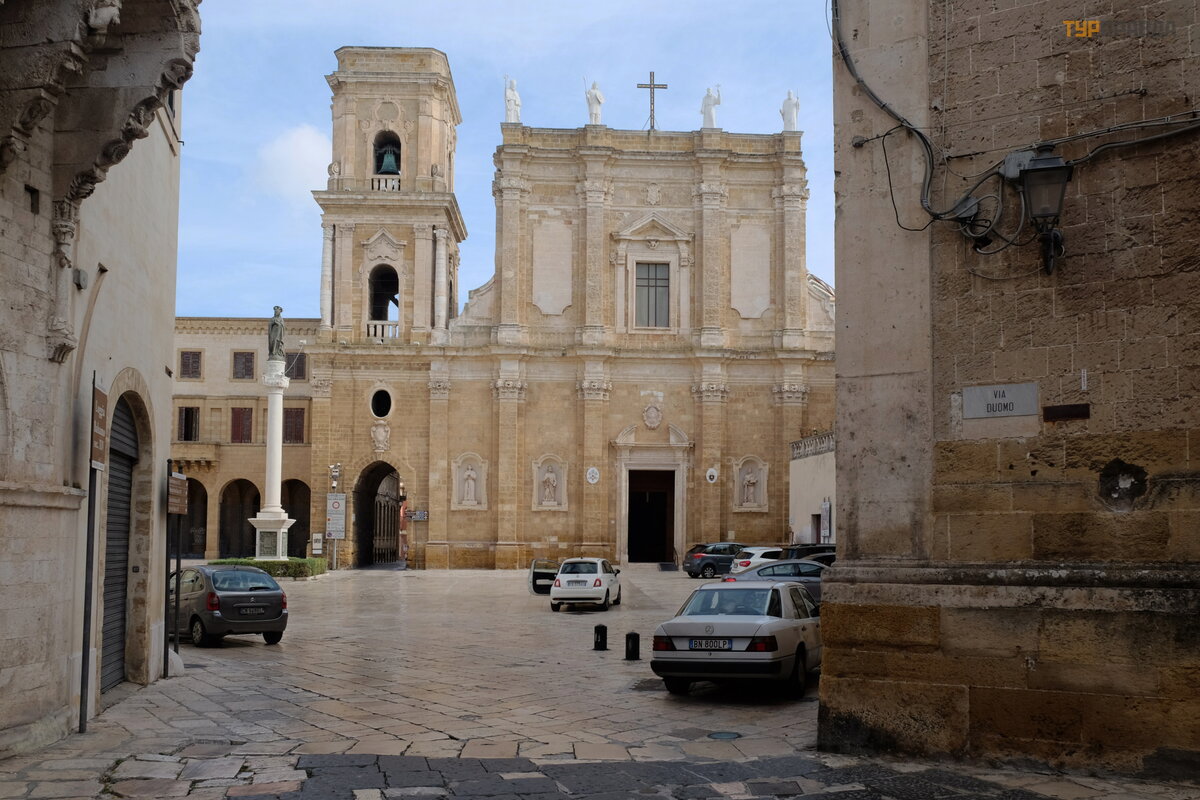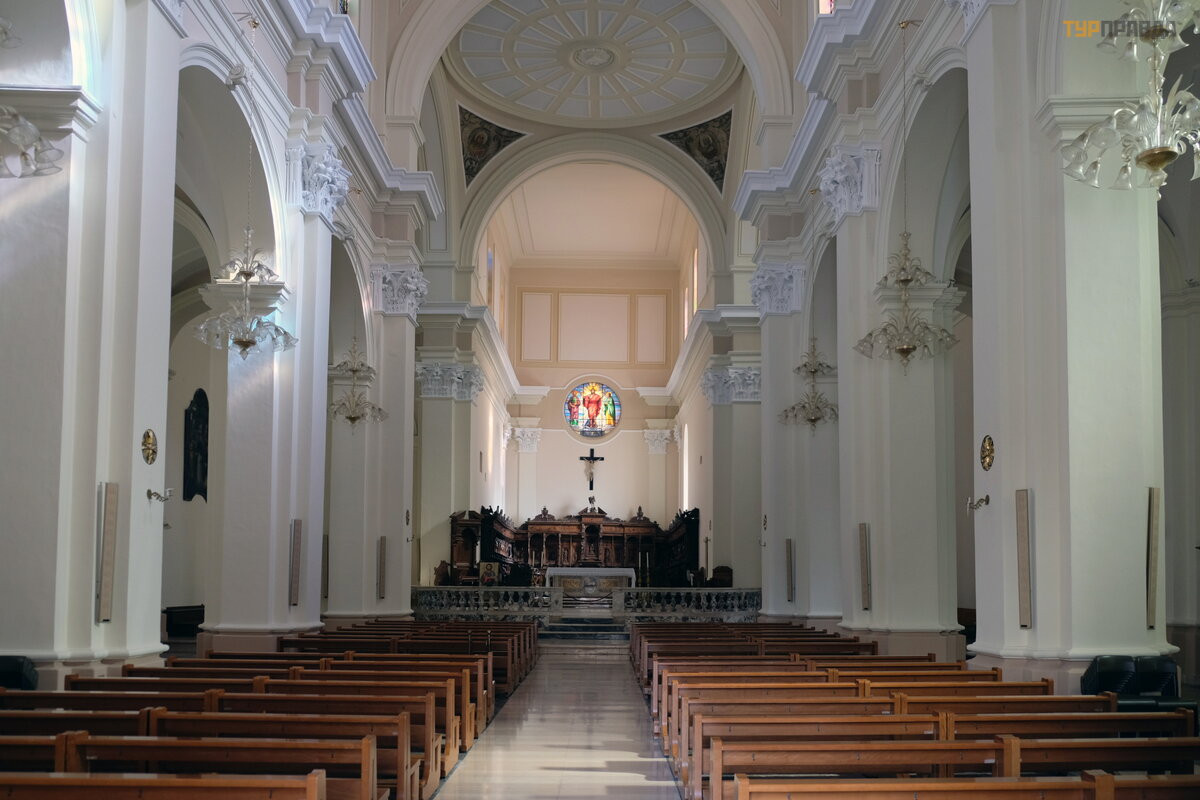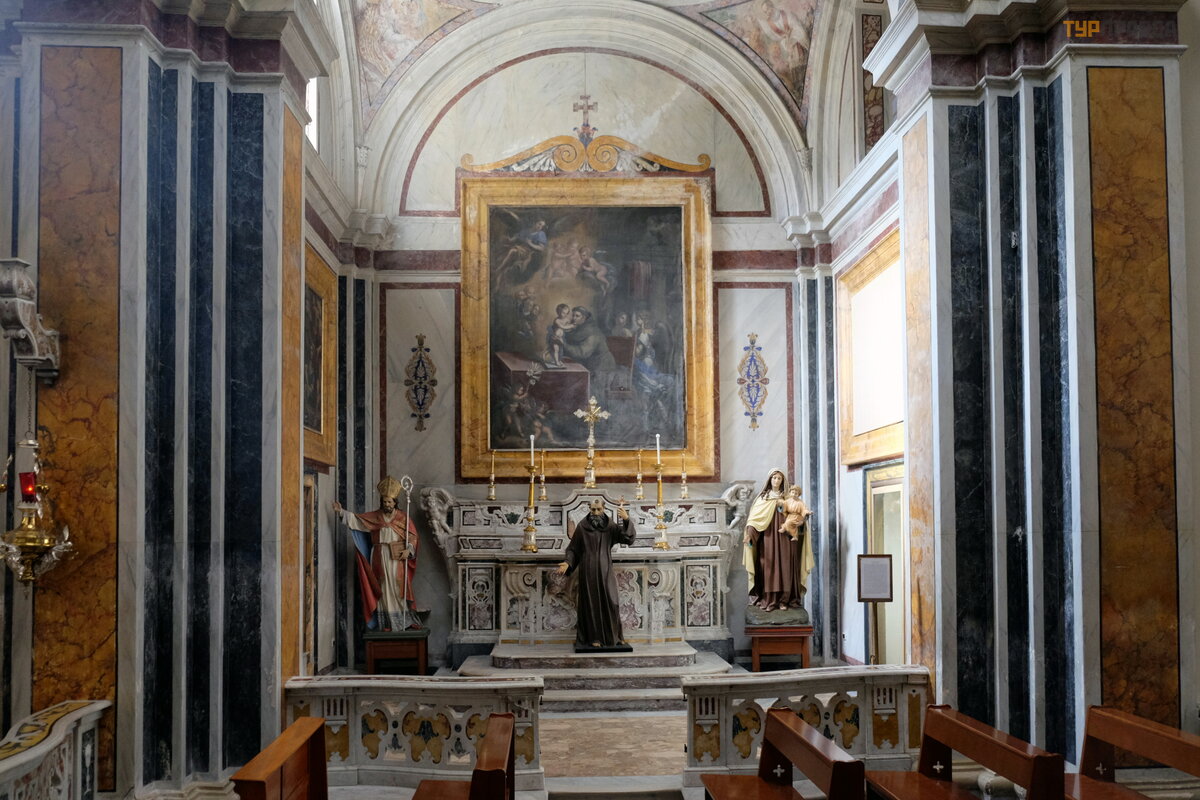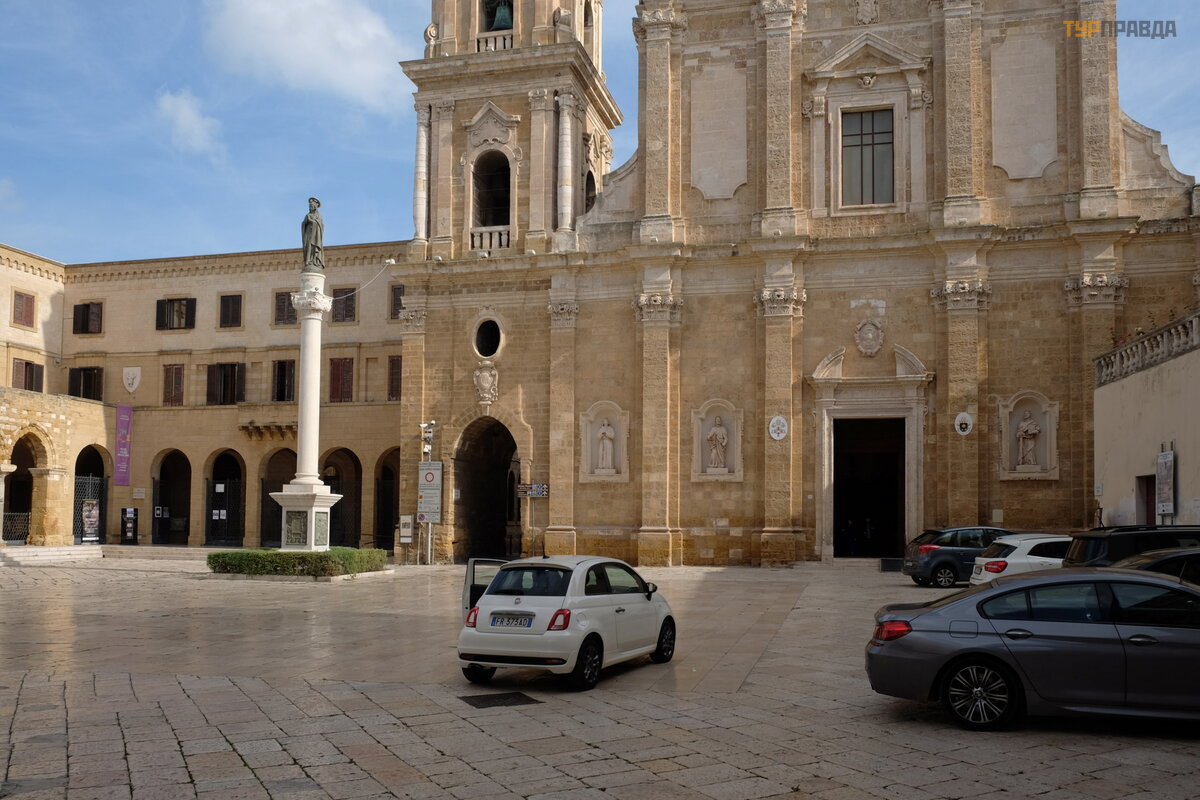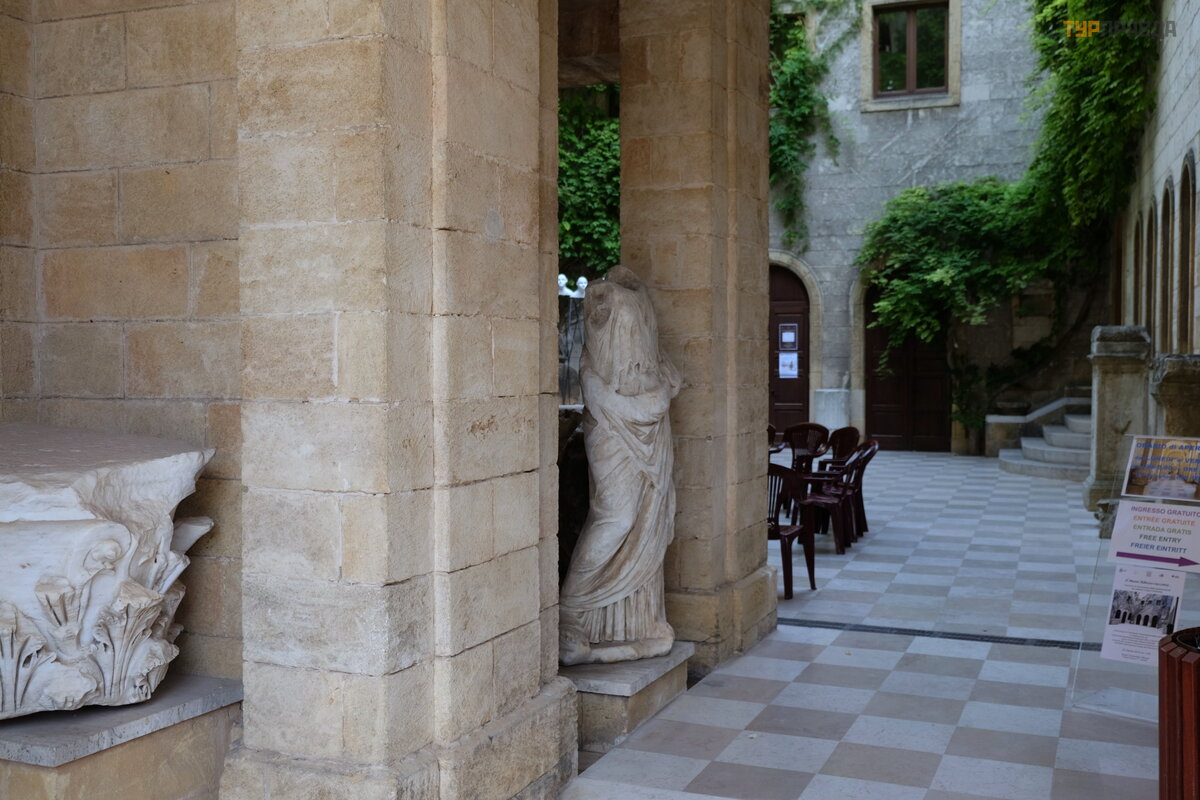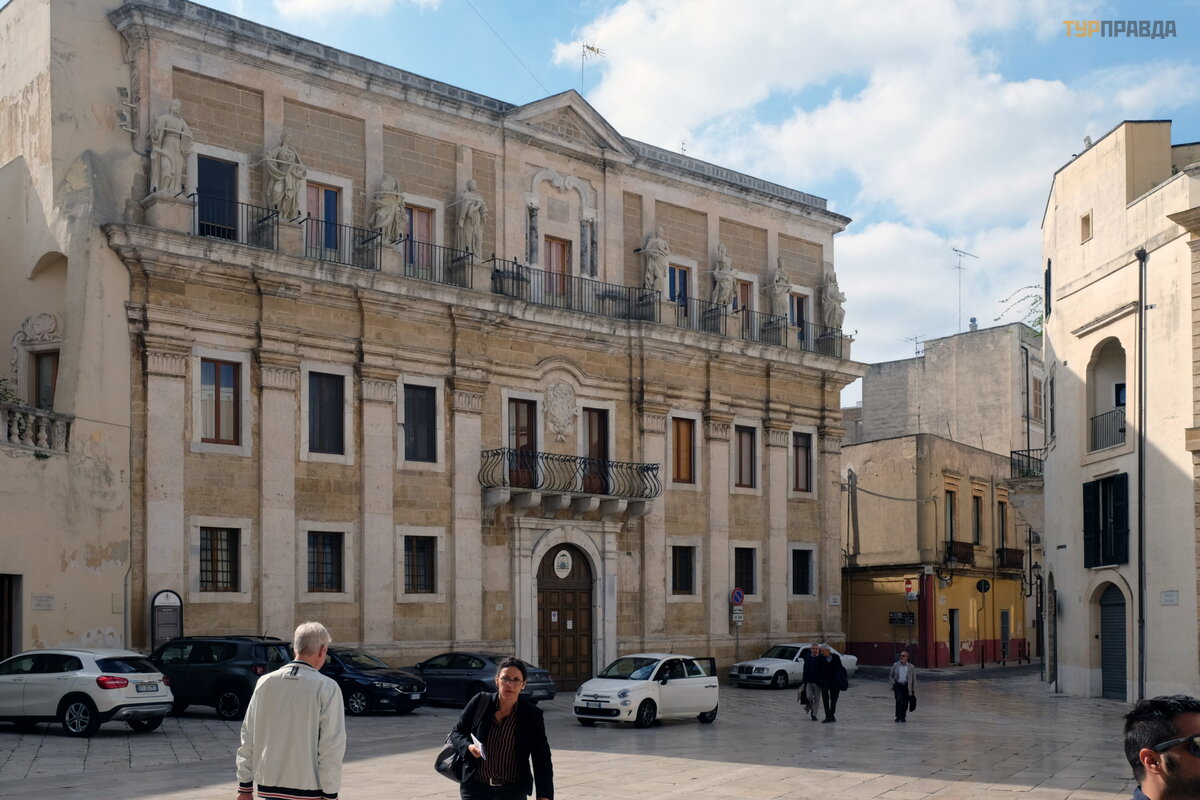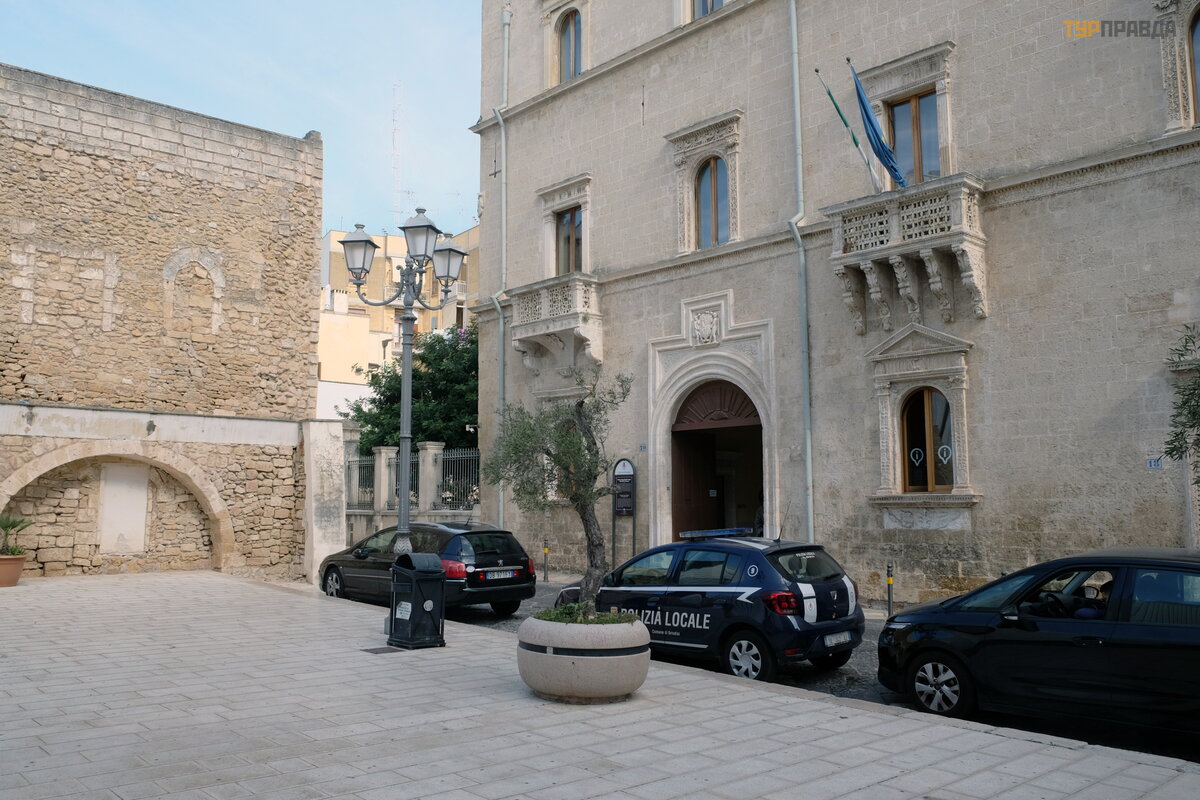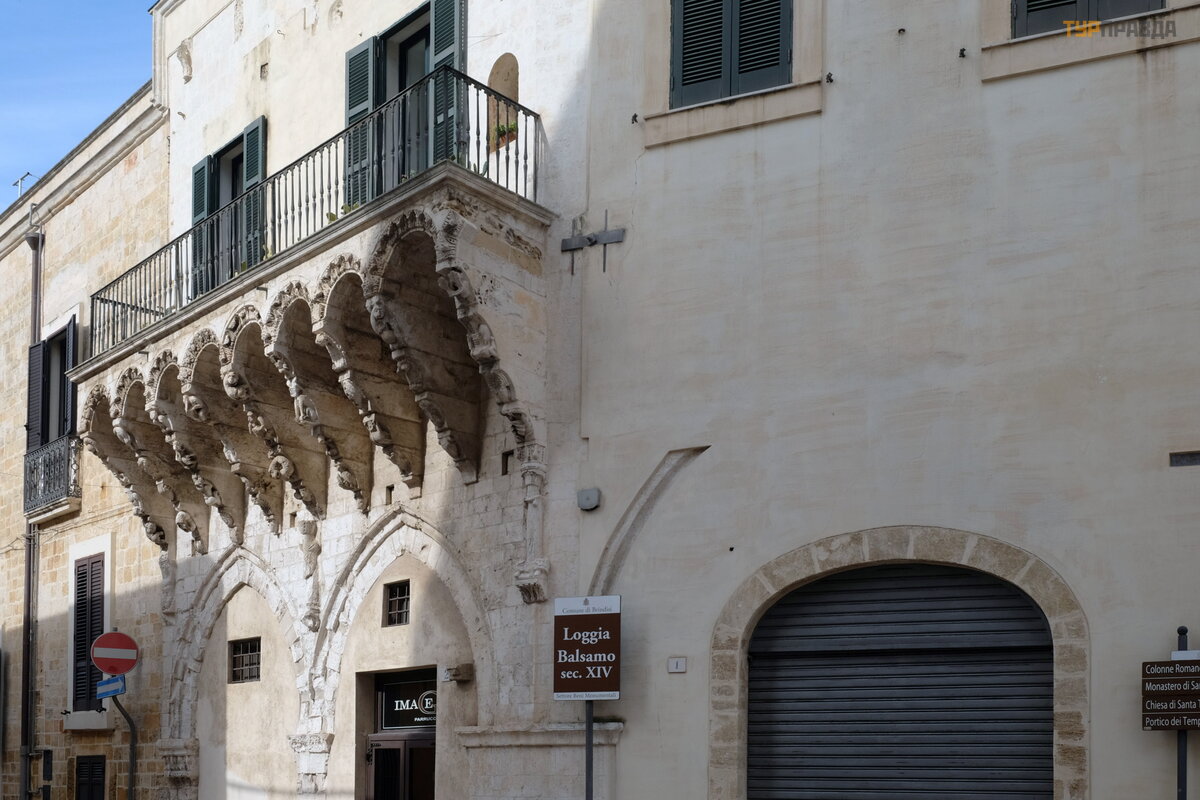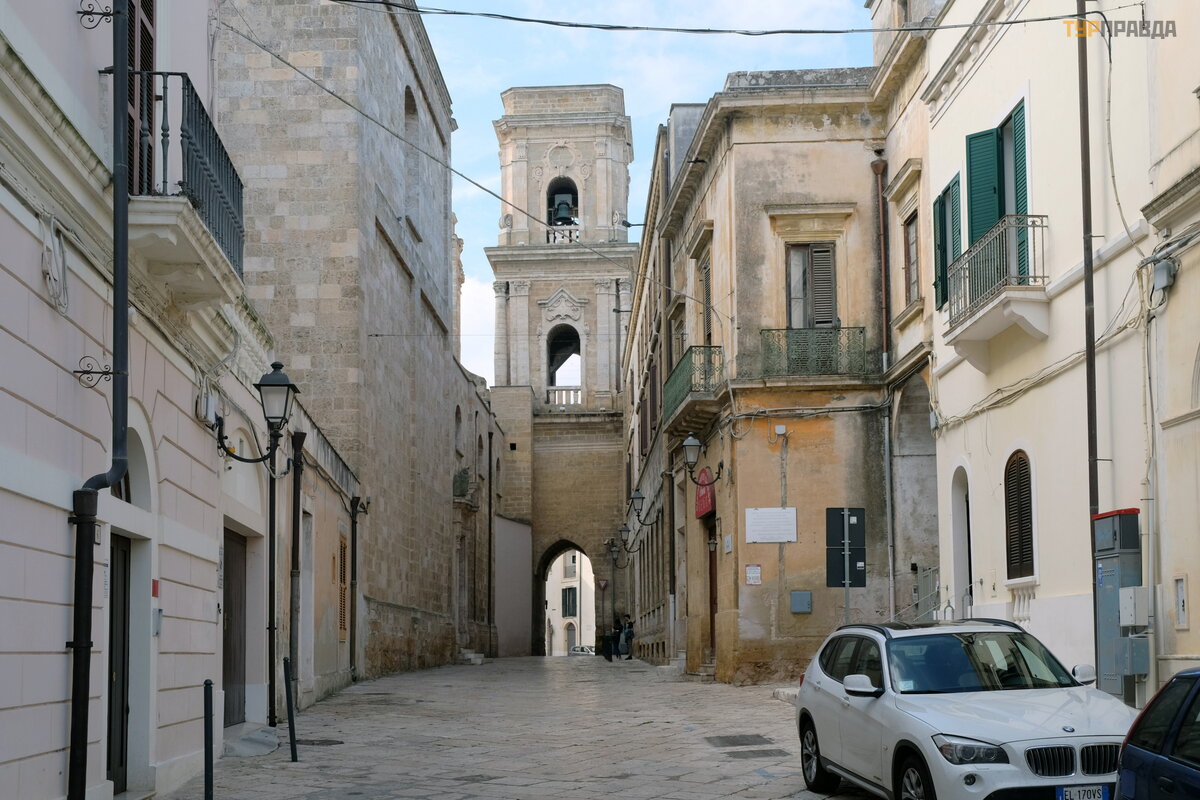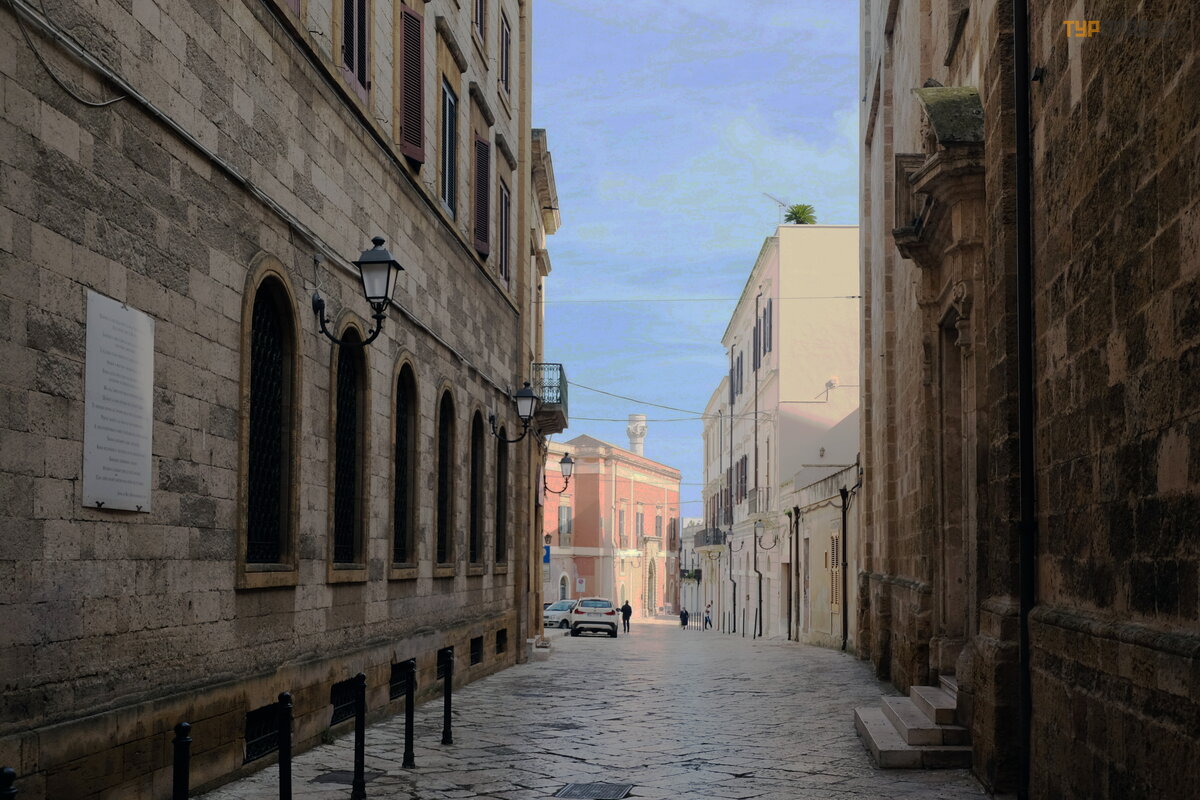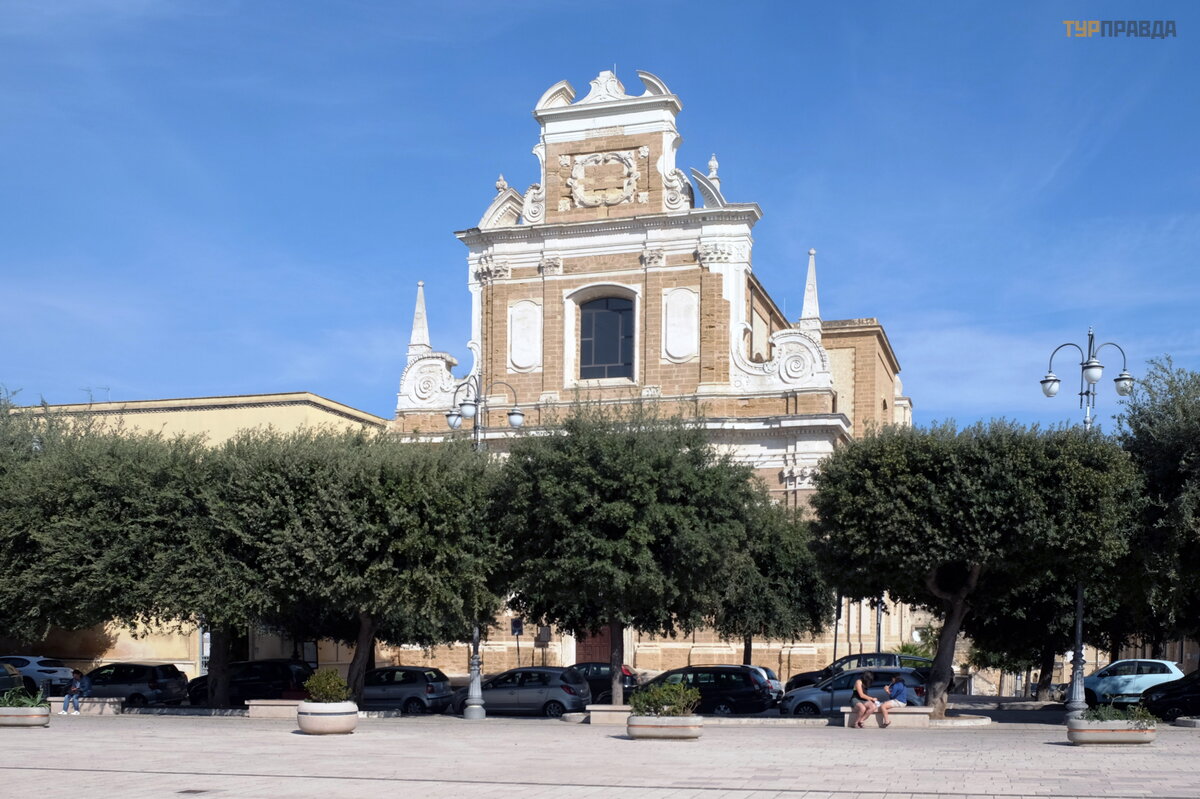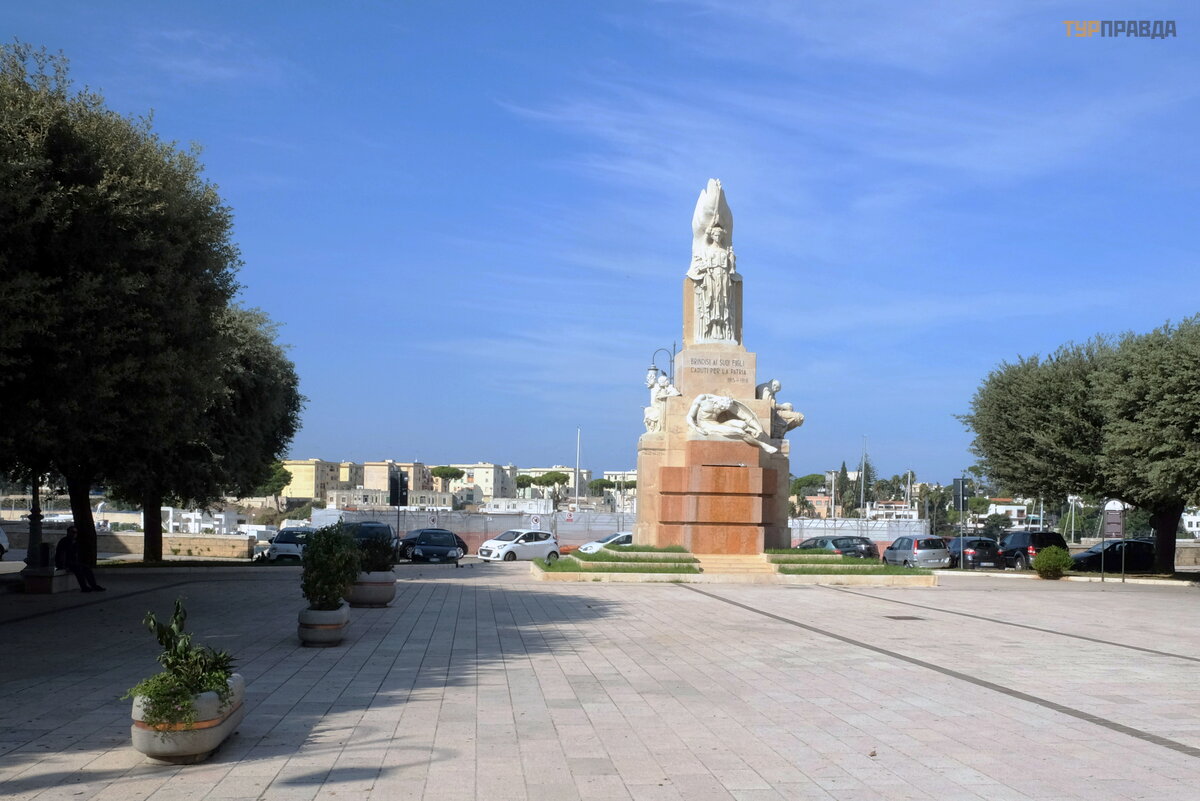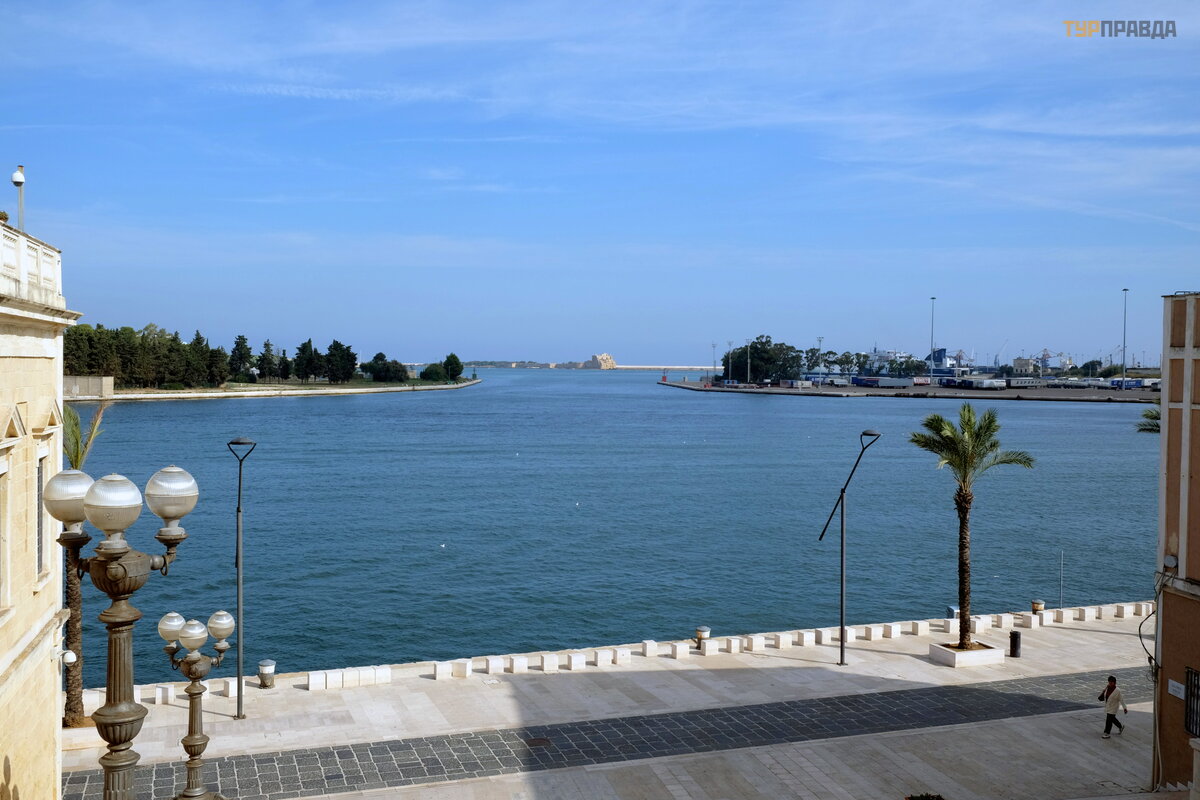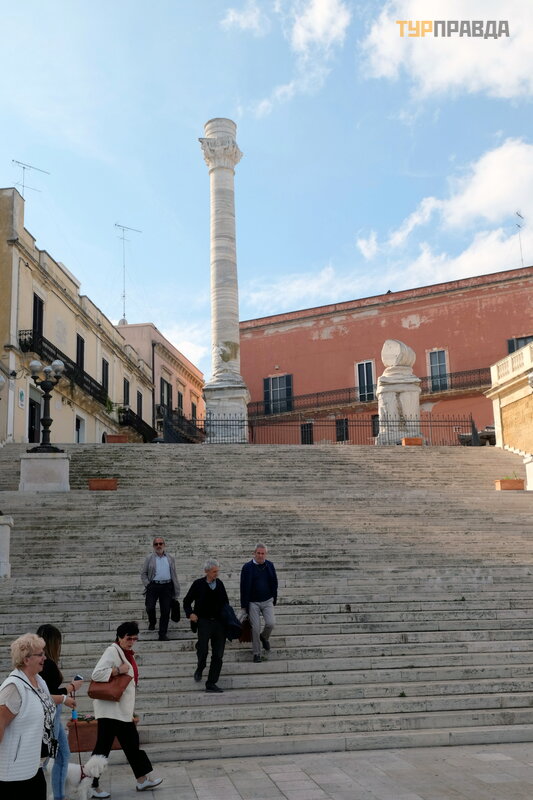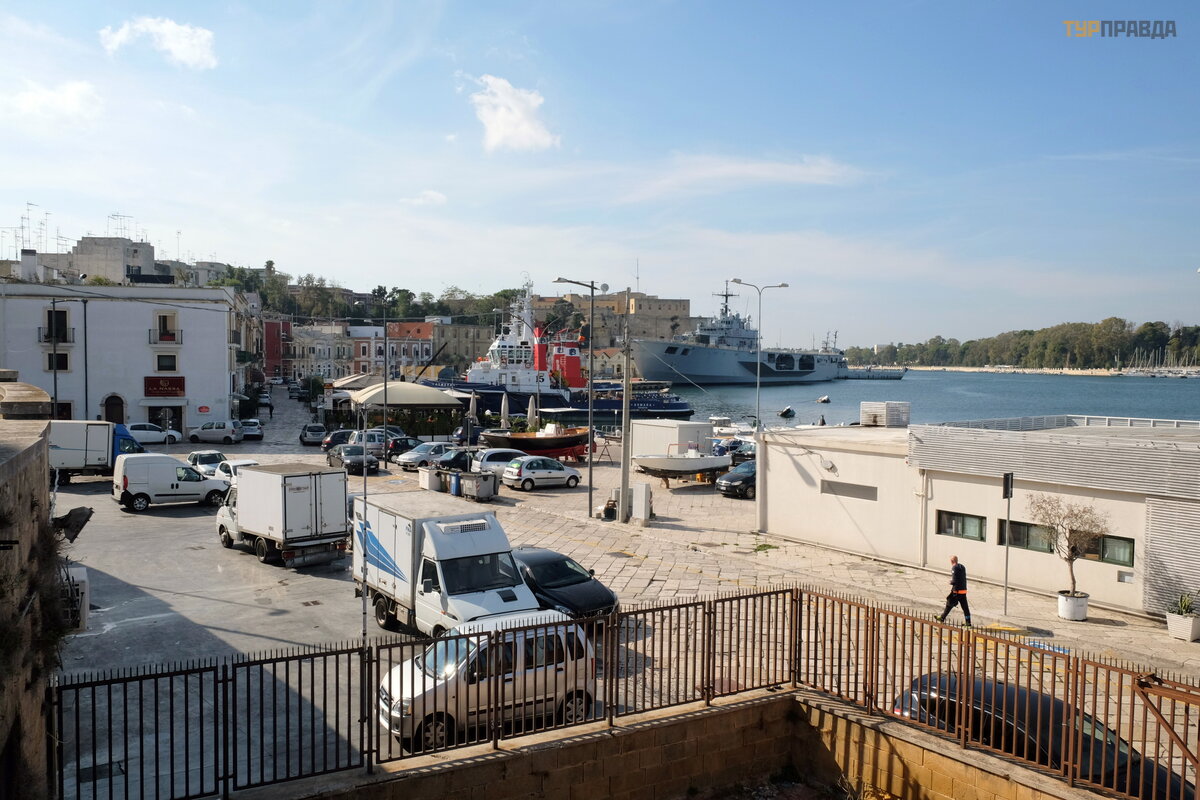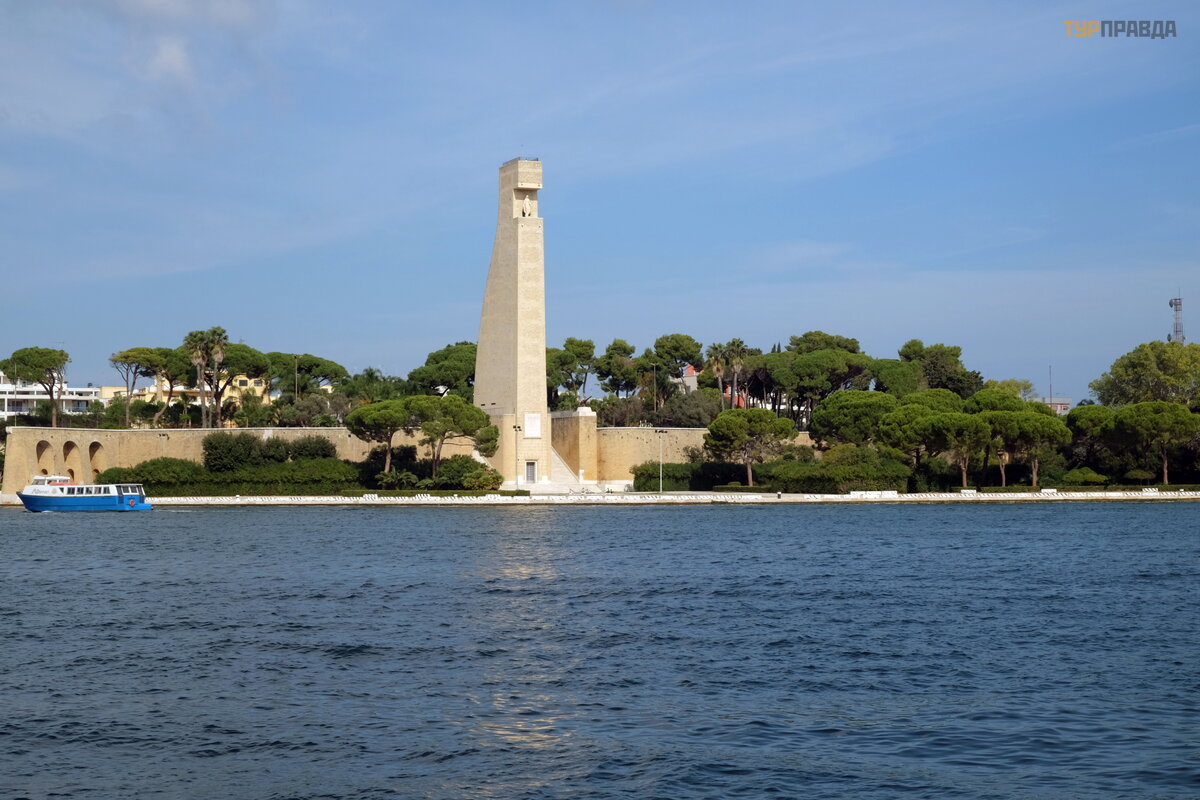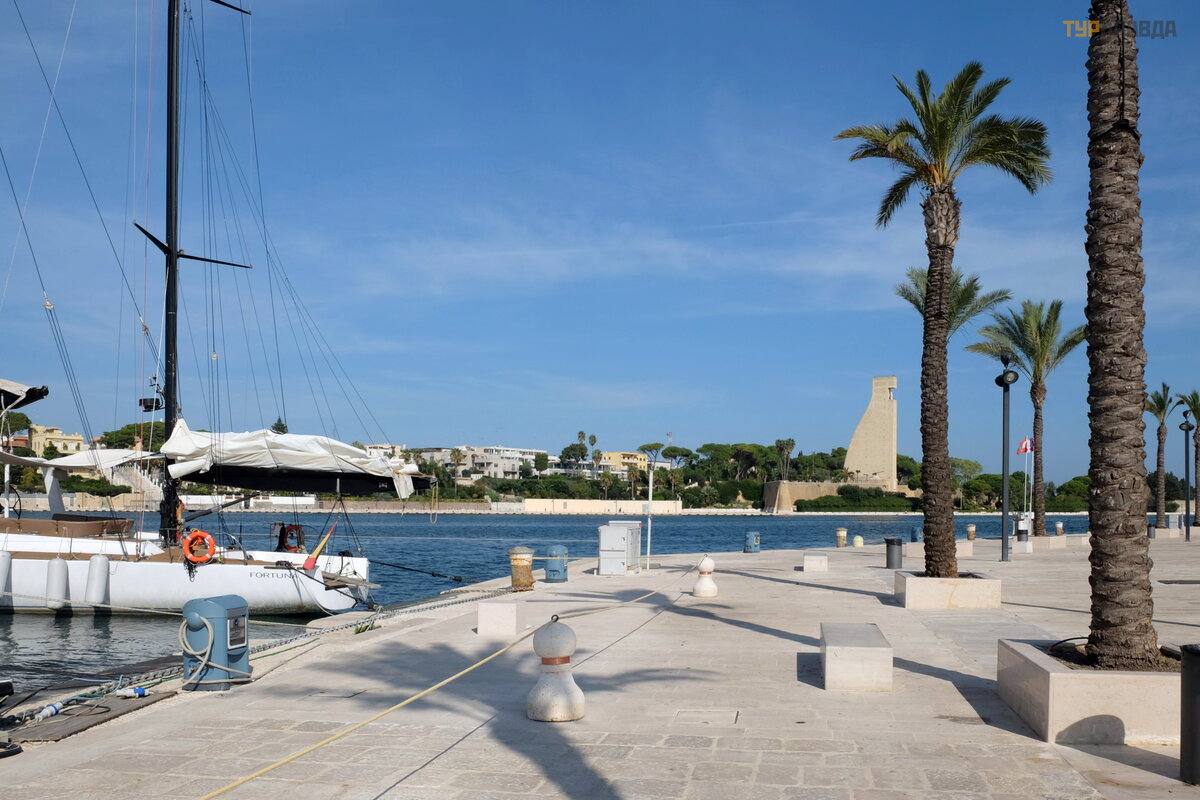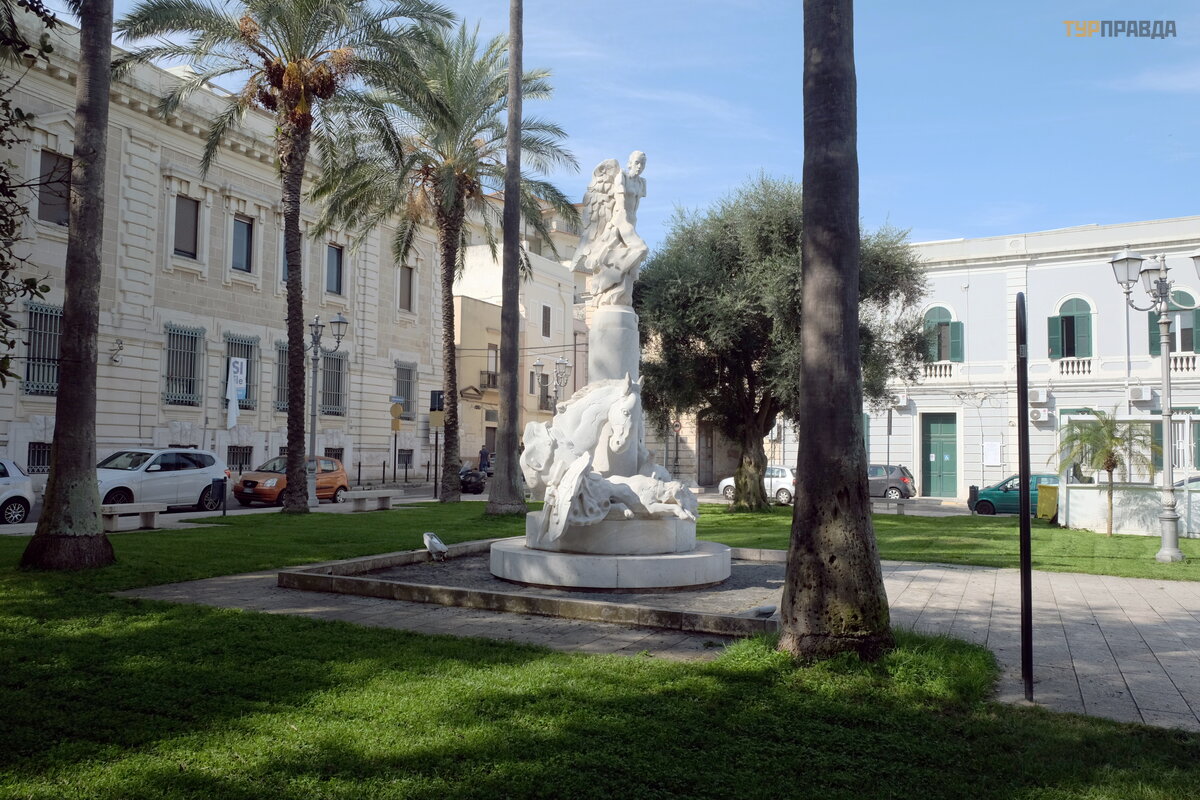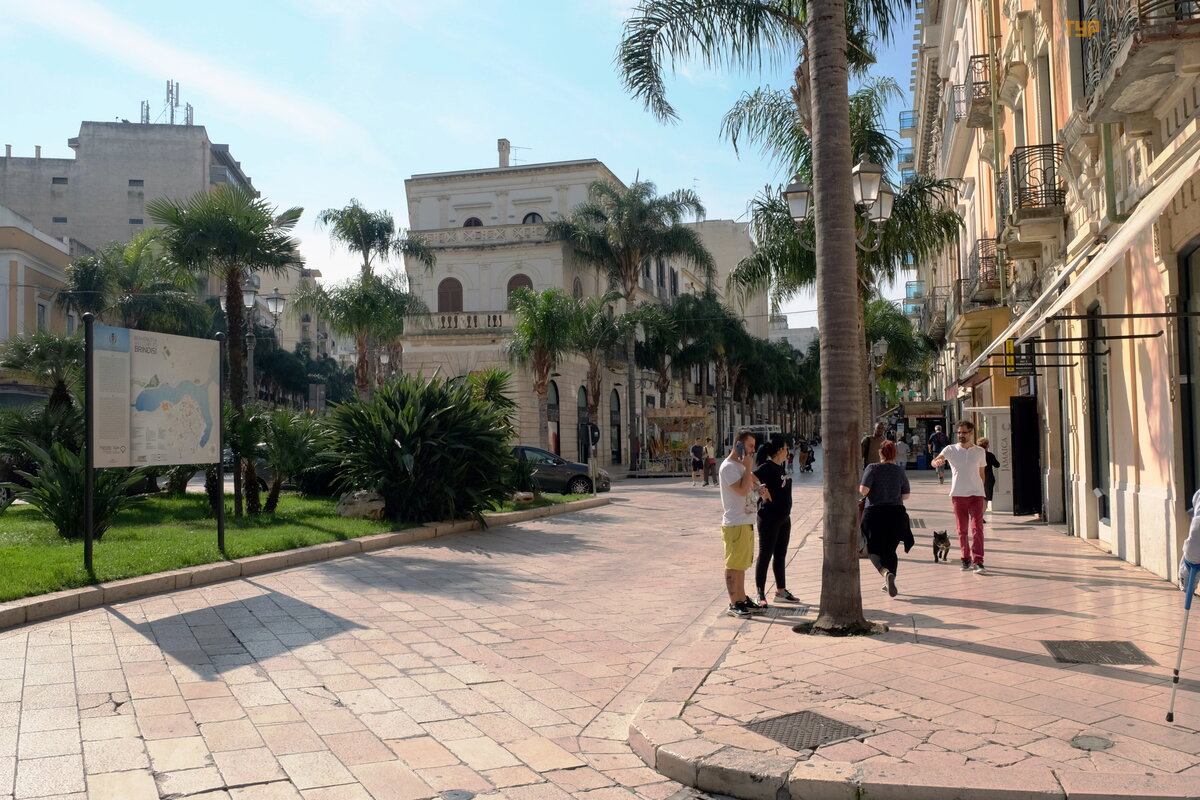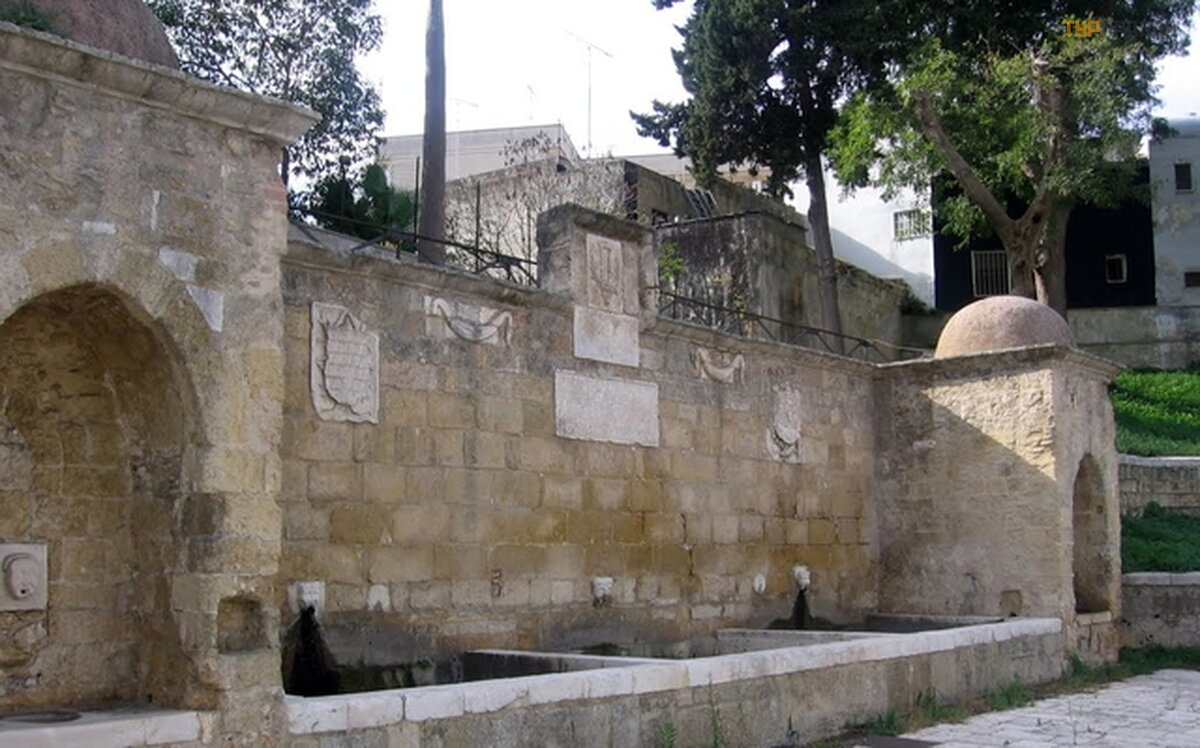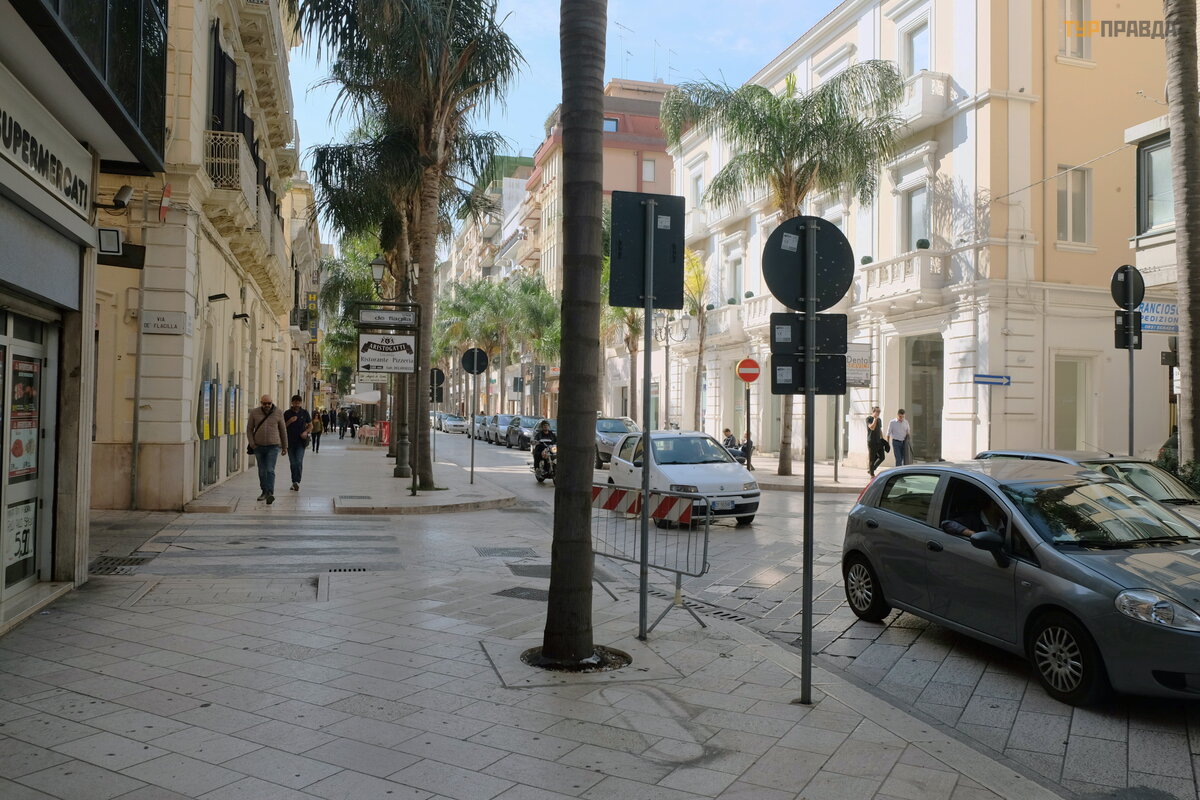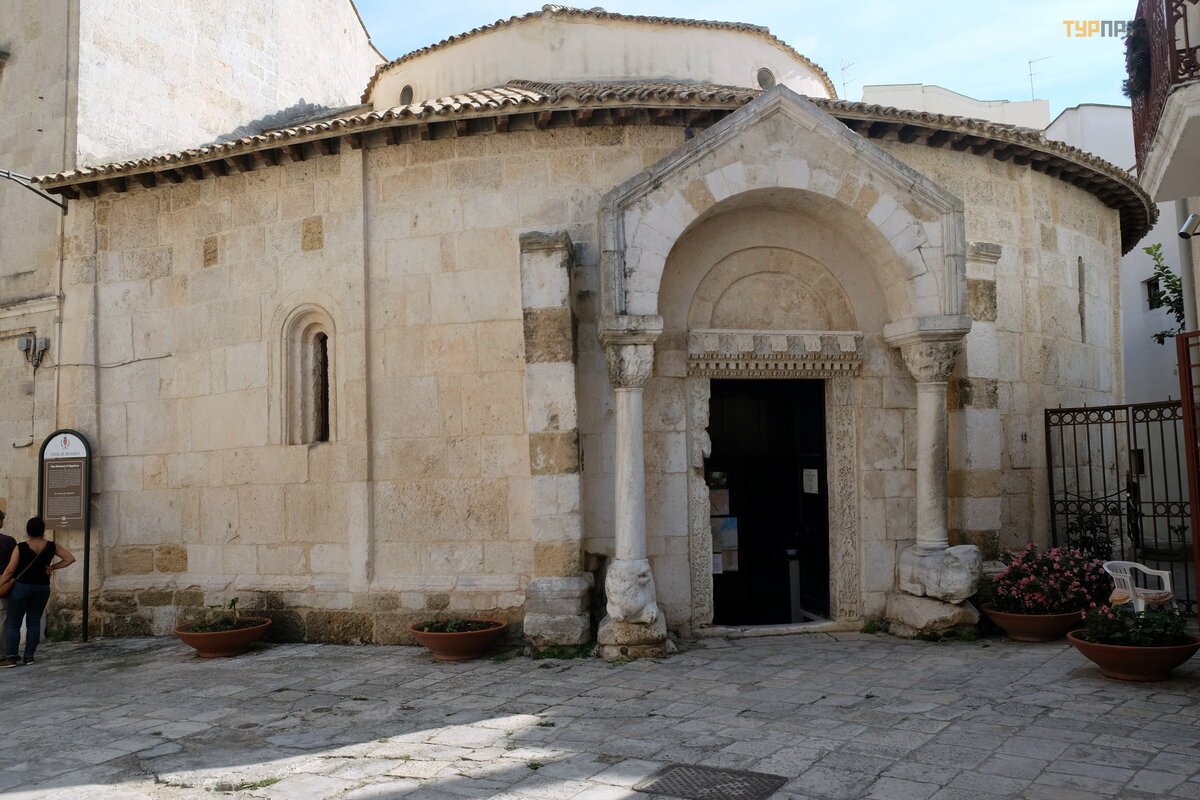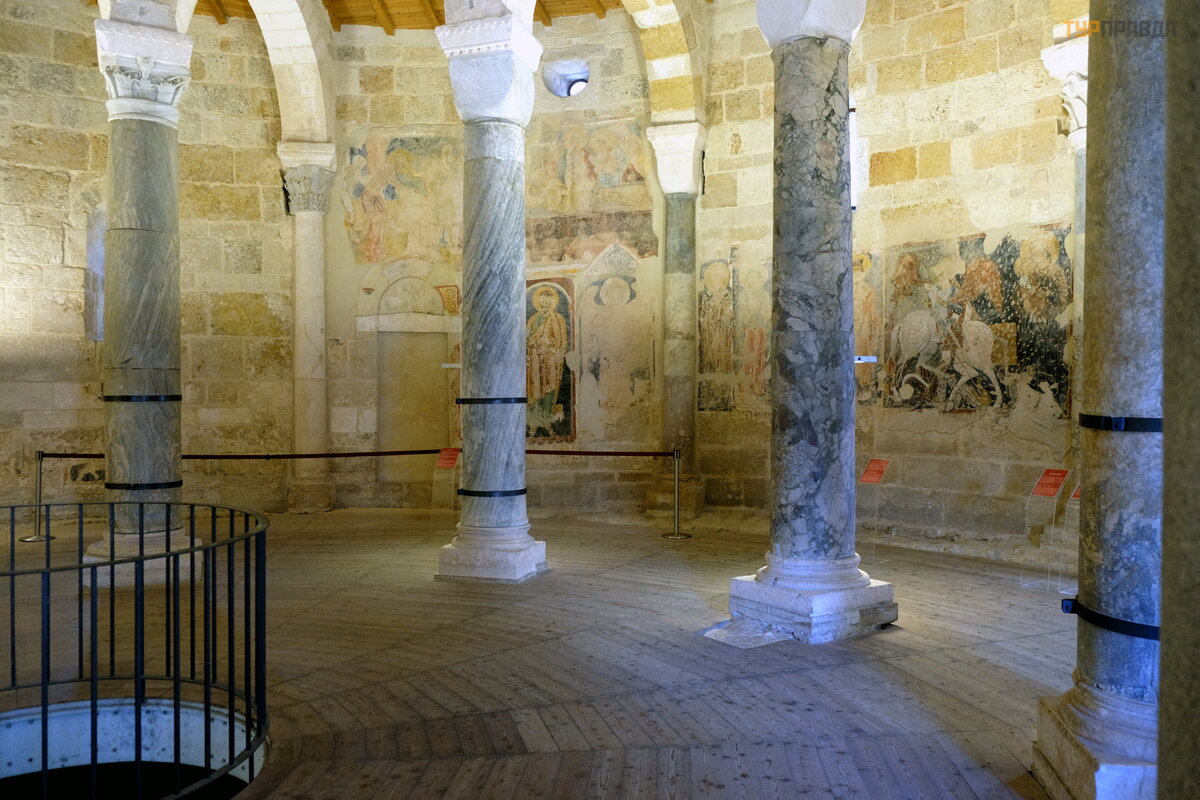Puglia and a bit of Rome. Part 7. Brindisi and Ostuni

To be continued. Start here >>>
From Lecce to Brindisi is not far away, only 25 minutes by train.
Brindisi is the oldest city in Puglia and the capital of the province of the same name. In 267 BC, Brindisi was conquered by the Romans and became an important seaport. The Romans named the city Brundisium, which means "the head of a deer" (the outlines of the bay really resemble antlers).
Station near the historical center, nearby a fountain with sea symbols:
In the central street of Via Marconi, which leads to the Old Town, there is a complex of St. Benedict, formed from a church, the foundation of which dates back to 1089, a convent of nuns and a museum.
Frescoes from the 12th century survive:
Beautiful cloister:
On the advice of the minister, we visited another church - San Paolo (Chiesa di San Paolo Eremita), built in 1332. Nondescript facade. . .
. . . but inside there is a beautiful interior.
With magnificent carved altars:
Moving towards the cathedral.
The Cathedral (1132-1140) was built in honor of John the Baptist. It was in this cathedral that the Crusaders prayed before the Crusades, and here Emperor Frederick II got married in 1225.
The cathedral, built in the 12th century, was rebuilt after an earthquake in the 18th century, retaining the layout of a medieval Romanesque cathedral.
The left apse, capitals of some columns, fragments of the mosaic floor (1178), wooden choirs (1594) remained from the old cathedral.
The Duomo (Cathedral) Square is the most beautiful in the city; concerts of world opera stars are often held here.
To the left of the cathedral is a small Portico of the Templars, 12th-13th century:
On the other side of the square is the building of the Seminary, which is an example of the Baroque in Brindisi. The first floor of the building is occupied by the archbishop's library.
Fragment of a building from the 14th century, the so-called. Loggia Balsamo. Loggia di Palazzo Balsamo is another must-see place. It is located on the corner of Piazza Duomo and is an excellent example of Italian architecture of the 14th century.
The unusual shape of the windows, lancet arches depicting birds and animals are interesting.
Through the arch under the bell tower there is a passage to the sea.
On the way, we went to the local market to buy wine, cheese and fruit, which we had a bite to eat in the square in front of the Church of St. Teresa, which was already closed for a siesta.
In the square Monument to the fallen soldiers of the First World War:
The sea in the bay of the port, as it were, is divided into two branches, which makes this port very convenient for anchoring ships. In the distance you can see the Aragonese castle, a fort protecting the entrance to the port, it is located on the island of St. Andrew, the end of the construction of the fort is 1604
To the sea descend the Stairs of Virgil (Scalinata di Virgilio),
on the top of which are ancient Roman columns - a symbol of the city, which has long served as a guide for sailors. In ancient times, they marked the end of the Appian Way. One of the columns broke during an earthquake in 1528, and a century later, its fragments were offered to neighboring Lecce, where they built a column in honor of St. Orontius.
Brindisi is an Italian naval base, so part of the port and water area is closed to the public.
On the opposite bank, a monument in the form of a ship's rudder, as much as 54 m high, was erected in memory of the sailors who died on the fronts of world wars:
The spacious embankment was designed during the years of Mussolini:
In the square there is a modern monument to Virgil, who died in Brindisi:
Let's go back towards the station.
Tancredi Fountain (Fontana Tancredi), which was built in 1193:
Lastly, we visited the very interesting old church of St. John at the Sepulcher (Chiesa di San Giovanni al Sepolcro). The building was built during the Norman period (11th century). There is an assumption that it was built by the Templars. In the 14th century, the church passed into the possession of the Knights of the Holy Sepulcher.
On the walls of the church you can see fragments of frescoes from the 13th-14th centuries:
This is where our tour of Brindisi ended and we drove back to Lecce.
Continued here >>>
